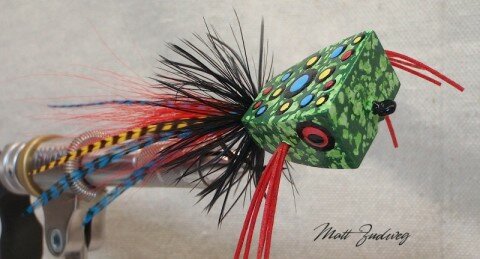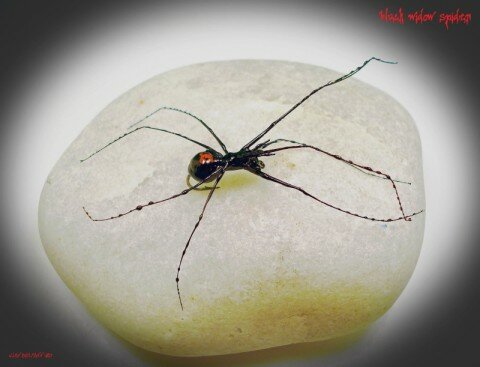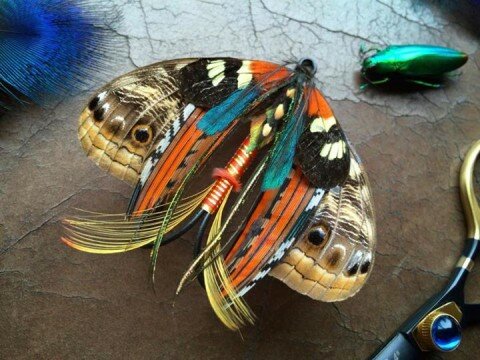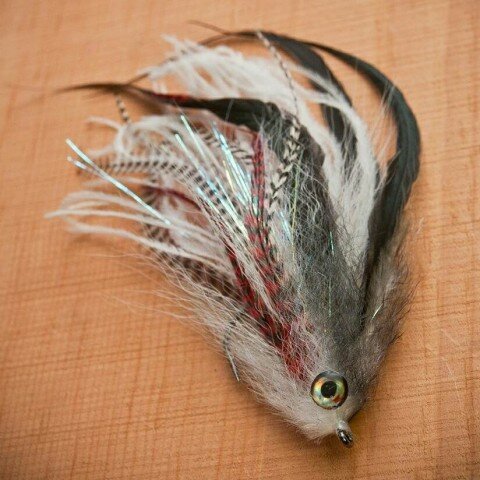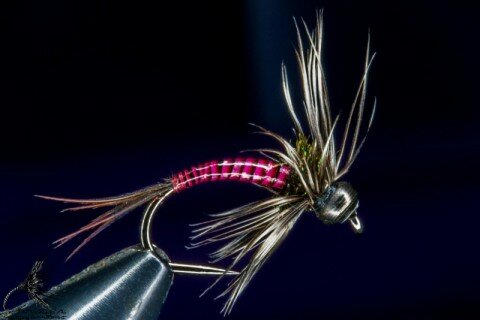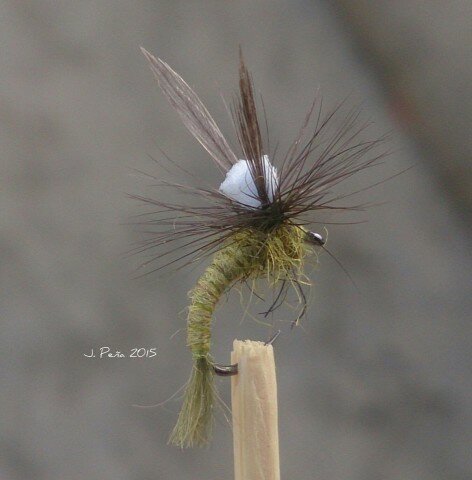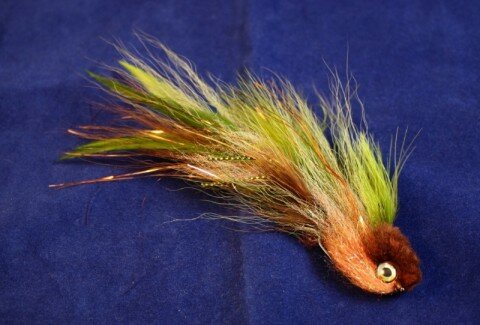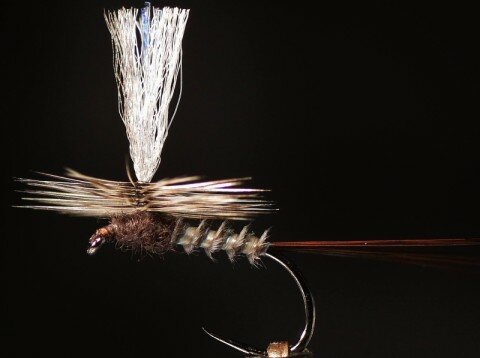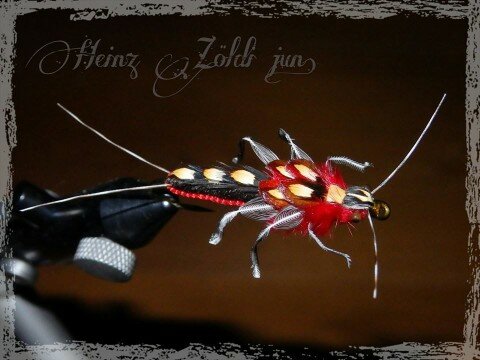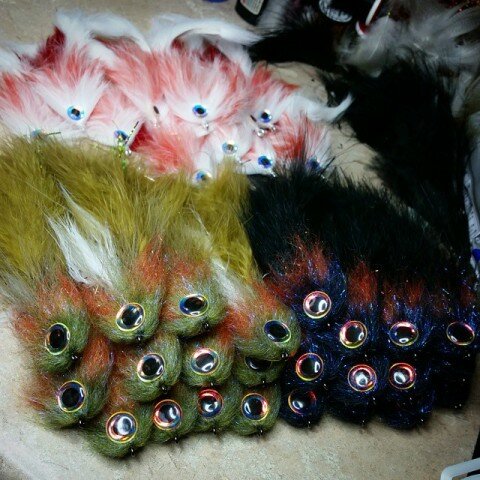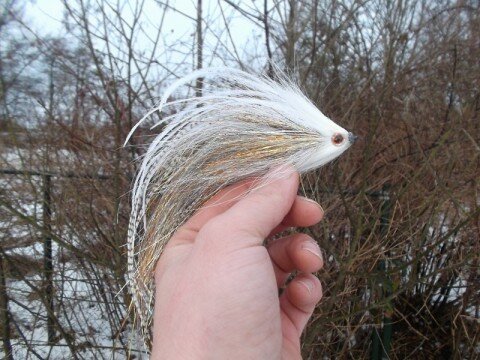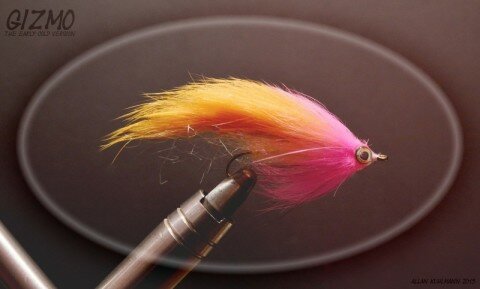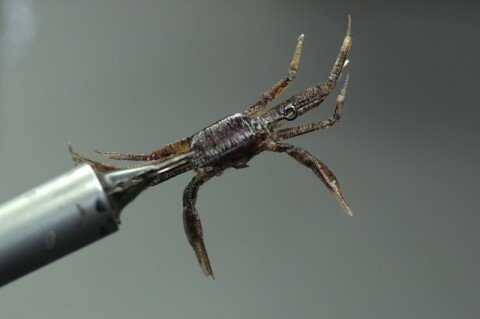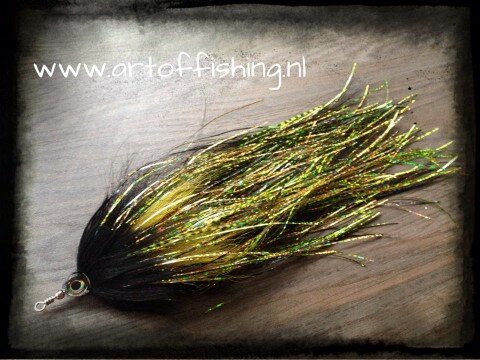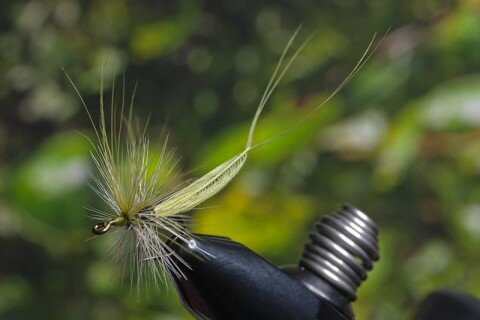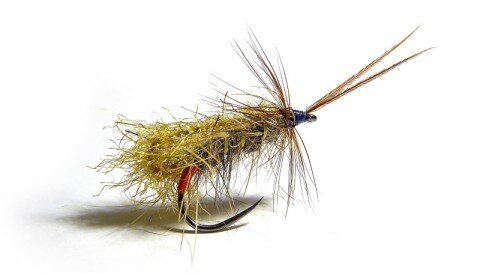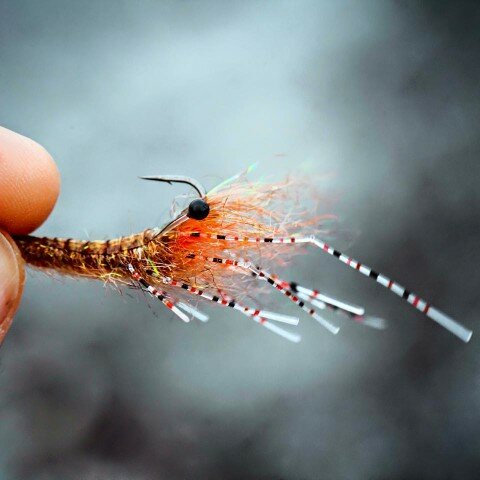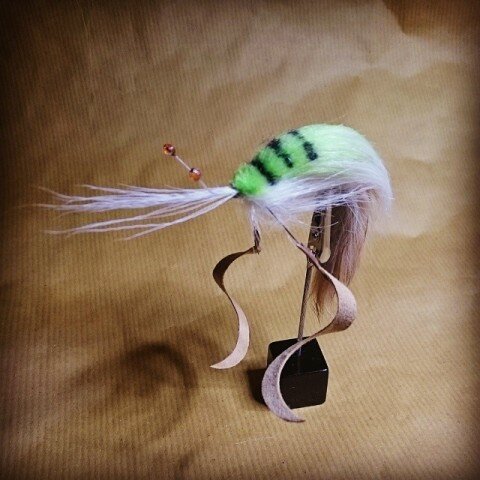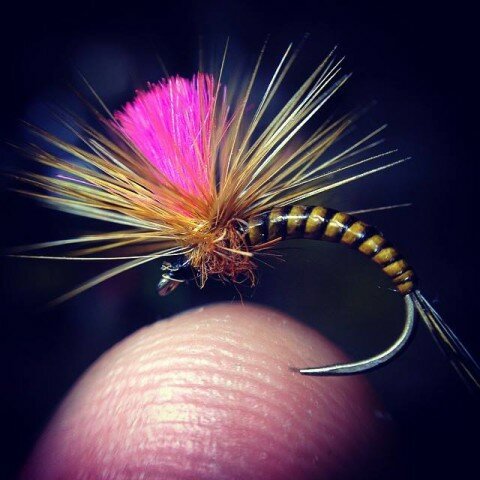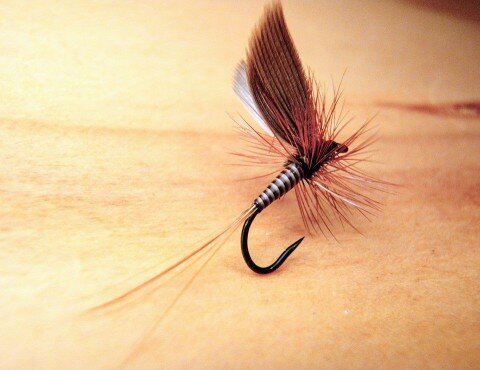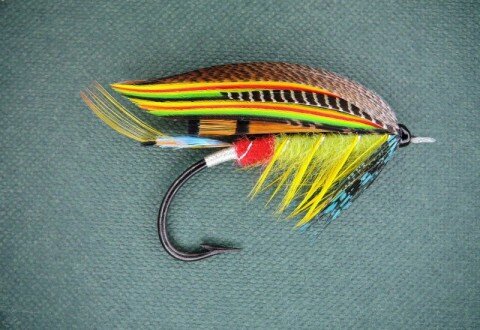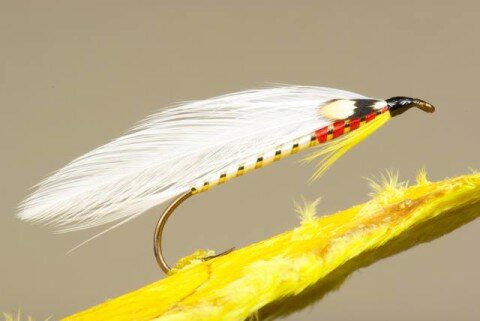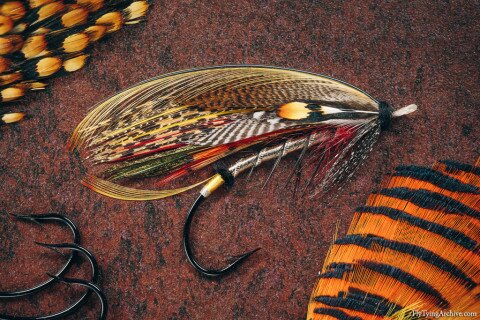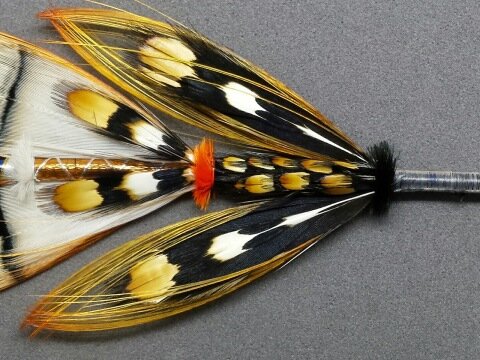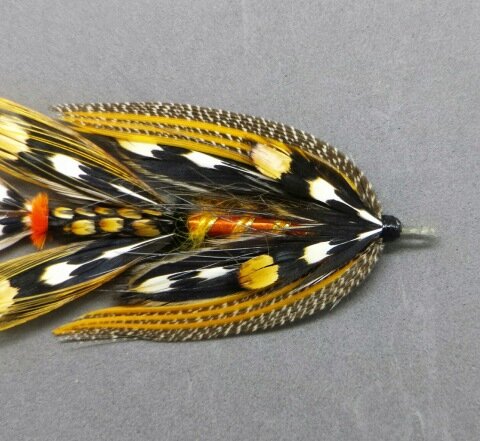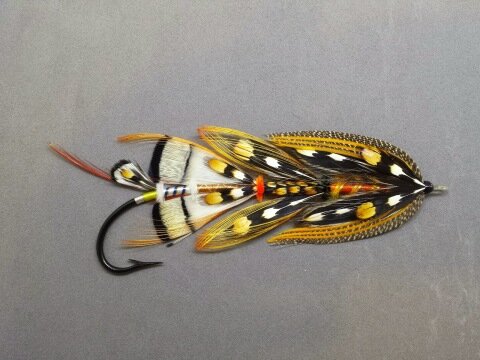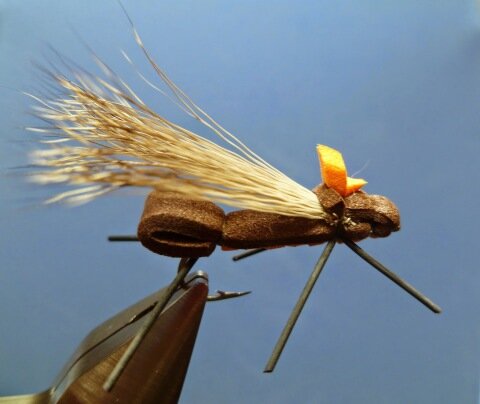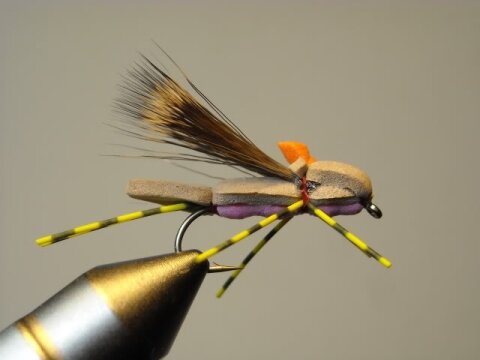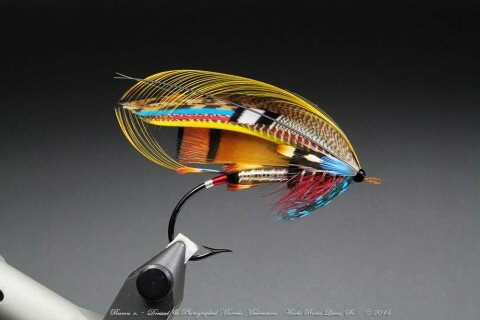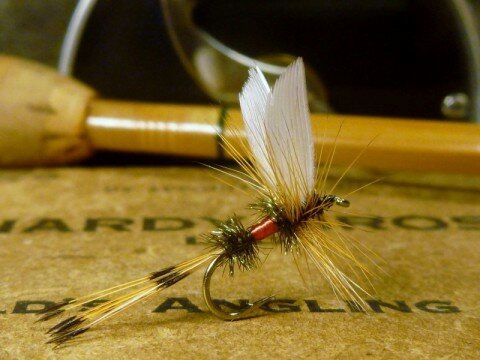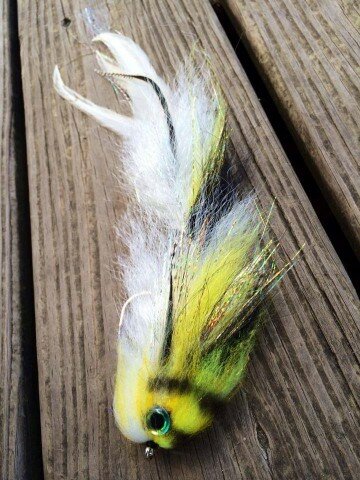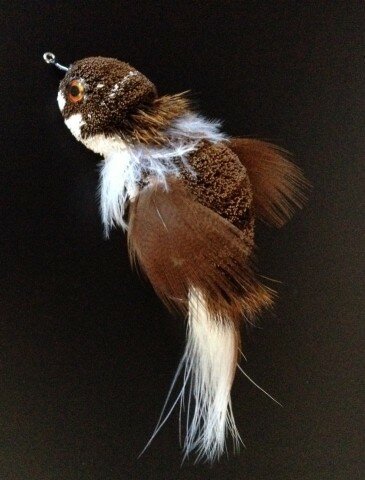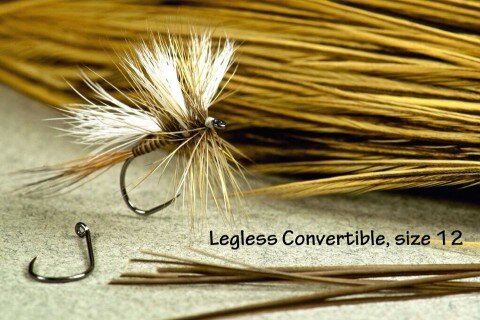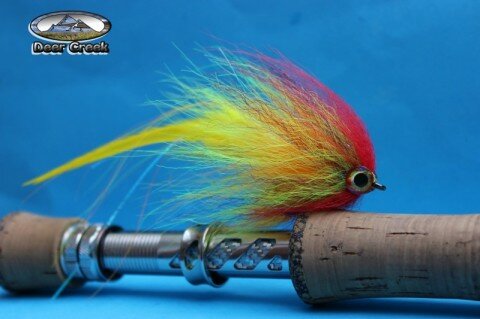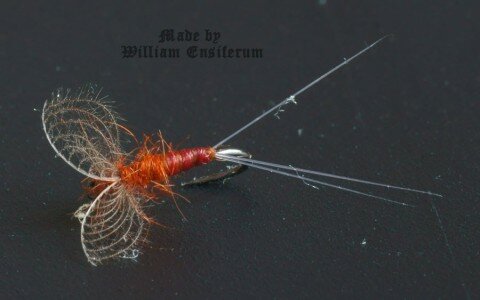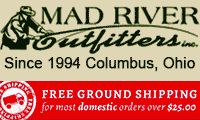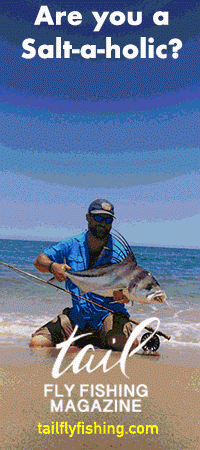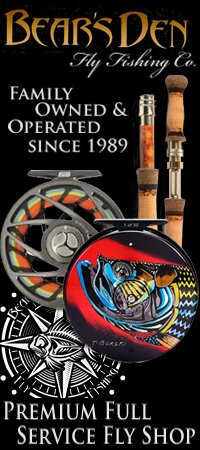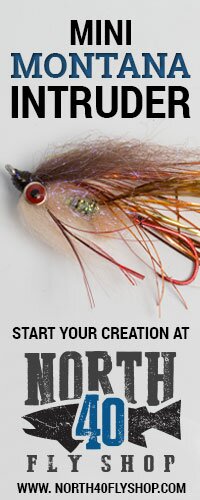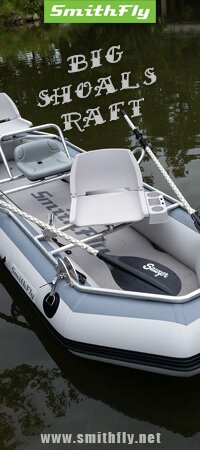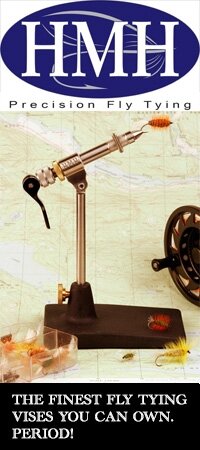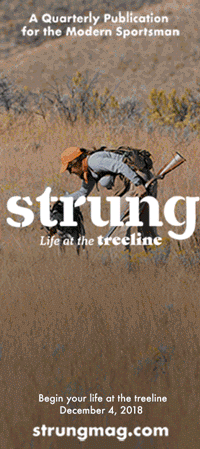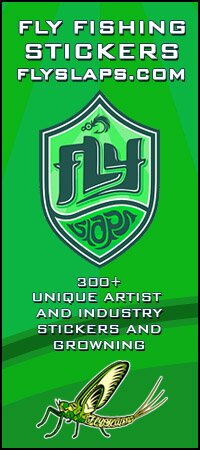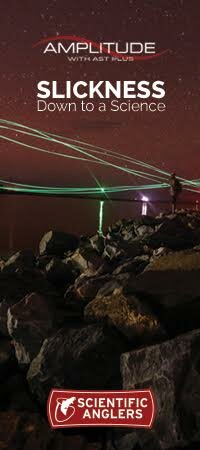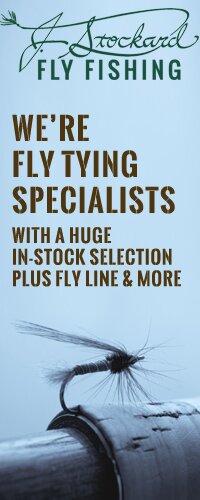Category Archives: Salmon
Flies Around the Net – 1-31-2015
The Lion tied by Timo Kontio
For the main wing I tied the bigger portion of it as a mixed wing but with sides and roof not mixed in. The pattern and notes per Land & Water as follows.
The Lion (James Wright.)
Tag: Silver twist and yellow silk.
Tail: A topping.
Butt: Black herl.
Body: Silver tinsel (flat), ribbed with silver tinsel (oval), about one fifth part being left at the shoulder for dark scarlet seal’s fur well picked out.
Hackle: Natural black, as shown.
Throat: Gallina.
Wings: Commencing with a few fibres of golden pheasant tippet, sword feather of the golden pheasant and peacock herl. Yellow macaw, red macaw, bustard, golden pheasant tail, teal, gallina ; with two strips of mallard above, and a topping.
Sides: Jungle fowl.
Horn: Blue Macaw.
Head: Black Berlin wool.
The shoulder of the Lion, together with its silver body, leads us to the conclusion that it is for bright water purposes. In fact, all silver bodies are used with greater success in bright weather and clear water, although this particular pattern may certainly show a little more than others of its sort in waters that are porter- coloured from peat, or otherwise slightly stained.
Visit Timo’s website at the Fly Tying Archive
Twisted Firestarter by Eunan Hendron
This fly came about after I tied the Eastern Sunset. I felt on an artistic roll, and decided to break out the big 8/0 4.5 inch hook I’ve had stashed away for over a year.
Truth be told, I had a completely different idea for this hook, which I kind of started out on, but it soon morphed to what you see before you. The already started fly is pictured (below) with a 3/0 hook, similar to that on which I tied the Eastern Sunset.

You’ll notice from the final fly, and the earlier pictures that I changed the tail. This was to complement the tail veiling, Amherst tippets flanked by smaller jungle cock nails. The early tail was just a Golden crest, but I soon switched it out to an Amherst crest. You might even see the very tip of the tail is banded like the Amherst tippets; I thought this was cool. The jungle cock, as you will see, ended up being a running theme through out the whole fly. Perhaps the only section that doesn’t fit with the rest of the fly is the white floss with blue rib This was a transition section, and I wanted it to be a bit different. White floss and blue tinsel are not often seen on flies. Soon after tying this part, the fly began to morph to its current form. There is also a fine gold tinsel rib leading the blue tinsel.
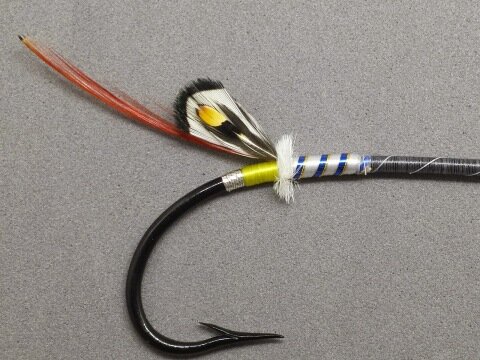
The copper tinsel section, is again another feature not often evident in classic flies, and I went with embossed tinsel to futher enhance the appearance. This is the beginning of the metamorphosis from what I had intended to what came out. The tippets veiling this section are from an Am-Gold pheasant, as are the crests (light coloration) veiling both sets of tippets. At this point I started to see more of a color theme forming, so I went with Jungle cock cheeks for the tippets, and an orange herl butt.
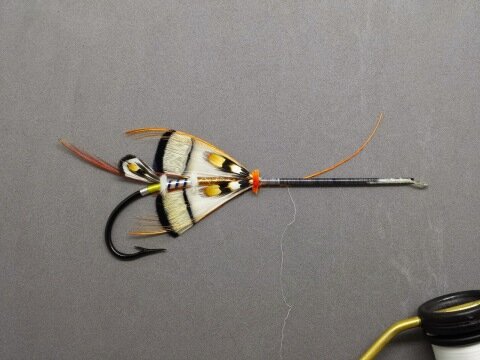
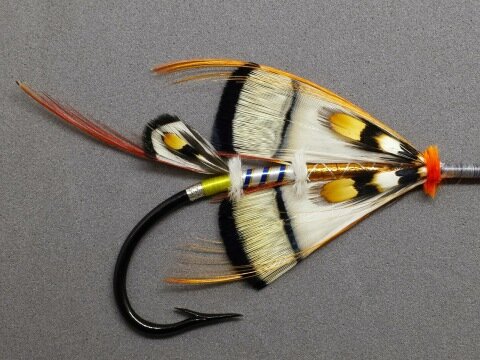
Keeping the jungle cock theme was something I did on a whim. The Chatterer fly (Traherne) is a fly I’ve long wanted to tie, but never really gave it a shot. That fly has chatterer, or more often these days, Kingfisher feathers, tied along the body. I’ve seen other artistic flies using Jungle Cock, so I decided to give it a try. It work out ok. There is a black floss body under the jungle cock body. For the most part all are in the right place, except one or two. I’ll let you try to figure out which ones are not up to scratch. Veiling this section we have back to back Jungle Cock nails, surrounded by dark Am-Gold crests, and butted with black ostrich.
The last body section is simply orange floss, with two tinsel ribs. Between them is an experimental rib I wanted to try. Orignally I wanted to have a very bushy and almost ‘mohair mane’ like rib, but that didn’t quite work out, so instead it ended up a more compact rib threaded between the tinsels – it is a hand blended mix of yellow and orange mohair in the ratio of approx 2.5 yellow : 1 orange. Hackle here is blue eared pheasant.
Finally the front wings. These are comprised of back to back spear shaped Jungle cock. There was literally only two pairs of those shaped nails on the cape so everything worked out well in that regard – i.e. I didn’t screw up any of them. The married wings are custom dyed sunburst goose shoulder with kori bustard. Cheeks are jungle cock. I decided to forego toppings over as the head was already pretty bulky and I didnt want to ruin the wings, an easy thing to do with toppings. Head is black thread varnished to a high gloss finish.
Keep up with Eunan at http://www.addictedtovise.com
Korn’s Split-tail Salmon Fly
Doug Korn has posted lately on his blog 55 on the fly about an interesting Salmon Fly. This is a variation of his hopper pattern, which is what makes it interesting, in my opinion. Doug explains more about the Salmon Fly below. The popular hopper pattern it is based from is Korn’s Wrapped Foam Hopper, so I have posted a photo of it below.
This is a variation of my Korn’s Wrapped Foam Hopper that I tie for Parks Fly Shop. It makes a super Salmon fly and you can use the same pattern for Golden Stone flies as well. I just change the hook to a size 8-10 and the foam over body to a golden yellow. Out West it’s a killer fly when the Salmon flies are hatching and in the East for the small Spring Black Stone flies. I just change the color and downsize them to size 12…
Materials:
Hook: MFCo. 7026 4-6
Thread: black 6/0 Uni
Legs: MFC med. black legs
Underbody: orange craft foam wrapped
Over body: black or dark brown craft foam, hook gap wide with split-tail
Wing: deer tail hair
Indicator: orange craft foam
SBS
tie in back legs split
tie in underbody foam at eye extending out from hook
superglue thread base, wrap orange foam back to tail-legs
attach over body with 3 wraps at tail-legs, then loop thread over the top of the underbody to the eye (this way no wraps show and you can get the thread back to the eye
put superglue on the top back of the underbody and fold over body down and secure at the eye, then wrap back to form double bullet head
tie in wing of deer tail hair, glue butts, fold over foam to form bullet head and tie down
tie in legs and indicator post, keeping thread wraps to minimum.
whip finish, varnish
note: convert split-tail to egg sack variation if desired… see photo
The Olive Phantom Salmon Fly (Variant)
Davie McPhail shows how to tie a very nice salmon fly pattern.
Plastis Tube 2 inches..
Thread, Olive Uni-8/0
Tag, UTC Opal Mirage Tinsel
Tail, Olive and Chartreuse Polar Bear or Sub
Rib, Oval Gold Tinsel or Wire
Body, Loop Kola Gold Dubbing
Body Hackle, Yellow Cock
Under-Wing, Tanuki dyed Olive, Lim Green Goat and Loop Gaula Green Flash
Wing, Black Goat
Hackle, Olive Cock or Hen
Cheeks, Jungle Cock
Head, Black
Comments Off on The Olive Phantom Salmon Fly (Variant)
Filed under Salmon
Multi feather salmon fly – James F. Goggans
I was browsing through Cotinga – Classic Salmon Flies on Facebook and saw this little gem! Beautiful tying by James F. Goggans. What is even better is that Jim used a variety of feathers to marry this wing together. Here is Jim’s explanation.
“My own design. 7/0 reworked Mustad. This is what happens when you start with one plan, then have an ephiphany during the night when you have finished the body. I was planning on putting a lurid wing on this. Then it occurred to me that I had never made a wing from two fibers each of many different feathers. So, I made this wing with fourteen different feather fiber pairs, plus two pairs of Kori. I think I will separate these ideas into different flies.
Let’s see if I recall the feathers in that wing; Kori, of course. Both body feather and tail. Florican. Black Cockatoo. Argus wing. Argus tail. Royal Palm turkey. Red turkey. AmGold tail. Lady Amherst tail. Wild turkey. A couple more different turkey tail feathers. Don’t know the names of them. One is called “pencilled” by fly tiers, but I don’t know the actual name of the turkey. The last one looks like wild turkey, but is much lighter. The under wing is a section of Argus wing. Cheek is a Germains peacock body feather. Tail veiling is two slips of mallard, dyed orange. Throat is a dyed green hackle from the butt of the feather where it is marabou like. And a cobalt vulturine guinea neck feather. Horn is blue/gold macaw. Tip is small gold oval tinsel. Tag is purple silk. Butt is ostrich. Body is green silk. Body tinsel is some Gudebrod woven stuff I purchased recently from a fellow who said he got it when they went out of business. If anyone wants a spool, I can provide it.”
That covers the materials in this great looking fly. That might be the longest list of materials I’ve ever seen on one fly. Great work Jim!
Comments Off on Multi feather salmon fly – James F. Goggans
Filed under Salmon

